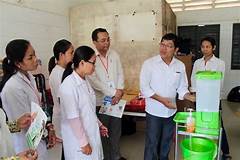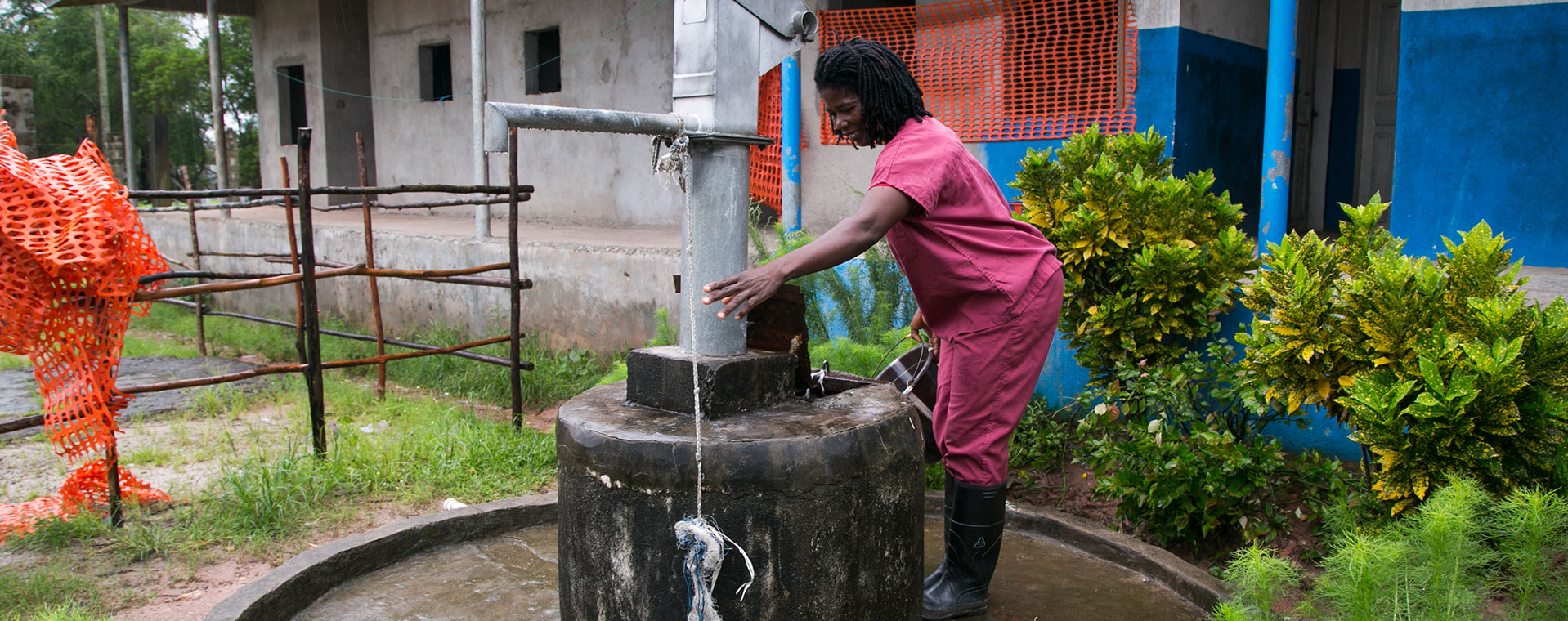
Innovations in Combatting the Hand Hygiene Crisis: A Lesson in Getting Creative
STORIES |
Global Water 2020
Walking through a packed hospital in rural Cambodia, I saw the same problem yet again: this facility cared for more than 100 patients per day, but the building that housed the pediatric and post-surgery wards had no water access. Standing between rows of beds, I observed the patients and their caregivers and wondered how the staff could possibly do their job well without a sink to wash their hands.
Simply washing hands with soap has been shown to prevent nearly 40 percent of neonatal deaths. It is fundamental to patient care and worker safety. The importance of handwashing cannot be overestimated, and soap and water and the ability to dry hands are imperative for infection prevention and control.
Staff at this hospital cared for patients who had just had major surgery; yet they needed to walk to the building next door to access a functioning sink and soap. One of the nurses told me she and her colleagues sometimes used hand sanitizer, but because they had to purchase it themselves, it was used sparingly. In addition to being cost-prohibitive, hand sanitizer isn’t always the best option to decontaminate hands. For example, the WHO says hands need to be washed with soap and water when covered with blood, a common occurrence in a health facility. Neither walking 100 meters nor using hand sanitizer intermittently was ideal for ensuring proper hand hygiene for every patient.
This absence of handwashing facilities inside healthcare facilities puts entire communities at risk of health epidemics and the spread of infectious diseases; and it is by no means unique to Cambodia. A series of recent reports have confirmed what should be incomprehensible: billions of people are served by healthcare facilities that lack adequate hygiene facilities. Forty-three percent of hospitals and health centers globally do not have materials for handwashing at points of care. That’s the conclusion of the first global report on water, sanitation and hygiene (WASH), based on data from over 560,000 healthcare facilities in 125 countries, recently released by WHO/UNICEF. These findings follow a landmark 2018 report that analyzed data from 129,000 healthcare facilities in 78 low- and middle-income countries: 50 percent of healthcare facilities lacked piped water, 33 percent lacked basic toilets, and 39 percent lacked soap.
What then do you do when there aren’t enough working sinks in the hospital and the infrastructure situation won’t be improved anytime soon? Sometimes, you need to get creative. WaterSHED, a local Cambodian NGO, is no novice when it comes to finding innovative, yet simple solutions. They started by looking at ways to improve hygiene in rural communities across the Mekong, focusing on households and how to motivate families to consistently wash their hands. With insights from Vietnamese and Cambodian mothers, they designed a portable sink and tested it in rural homes with young children. The end product: the “HappyTap”, an affordable, mobile, and easy-to-use way to encourage everyone to stay healthier by maintaining better hand hygiene.
It may sound like an obvious solution, yet there were no low-tech, low-cost alternatives to sinks on the market in Cambodia. But could it function in the more demanding healthcare setting as an acceptable alternative where water infrastructure is not available? Through funding from the General Electric Foundation, Emory University partnered with the team at WaterSHED to bring Happy Taps to GE project hospitals where Emory was working. While hospital staff were keen to try it out, they made it clear that they wanted their own designated sinks, separate from patients and caregivers. Four portable taps were placed in critical handwashing areas that lacked water access, on carts so they’d be mobile. A mirror and a poster about handwashing were hung on the wall above and staff members were assigned to refill the water.
Our initial visits were encouraging. The Happy Taps were intact, functional and most important, in regular use thanks to their proximity to points of care. But we know sustainability notoriously plagues water solutions. With the best of intentions, equipment and infrastructure is installed, but with no funding, training and plans for on-going maintenance, faucets crack, pipes snap, and far too many sinks gather dust. Even with this low-tech innovation, we didn’t know what we’d find.
The real test was what we’d find when we returned a year and a half later. Not only were all the taps fully functioning and being used, they’d been placed in preferred locations and staff had rigged them with add-ons, like attachments for liquid soap purchases. During staff training on infection prevention, the portable sink in the middle of the training room was perfectly suited to demonstrate proper handwashing technique. Several staff even inquired about purchasing handwashing stations for their homes.
Is a portable tap a long-term solution? Probably not, because they require a staff member to fill up them with water and empty the discharge. When discussing their ideal handwashing situation, the hospital directors in Cambodia described a normal sink, piped in from outside.
But providing healthcare workers with the ability to clean their hands is absolutely vital. Until hospitals have access to piped water and permanent sinks in critical locations, particularly the point of care, and are kept operable with on-going maintenance, our experience in Cambodia demonstrates that portable handwashing stations may be one acceptable, cost-effective way to help close the global gap in the hand hygiene crisis within healthcare facilities. And that is the definition of one very happy tap.
For more information on Happy Tap, visit https://happytap.net.
About the Author
Lindsay Denny, a senior public health program associate for the Center for Global Safe Water, Sanitation and Hygiene at Emory University, is the health adviser for Global Water 2020.
